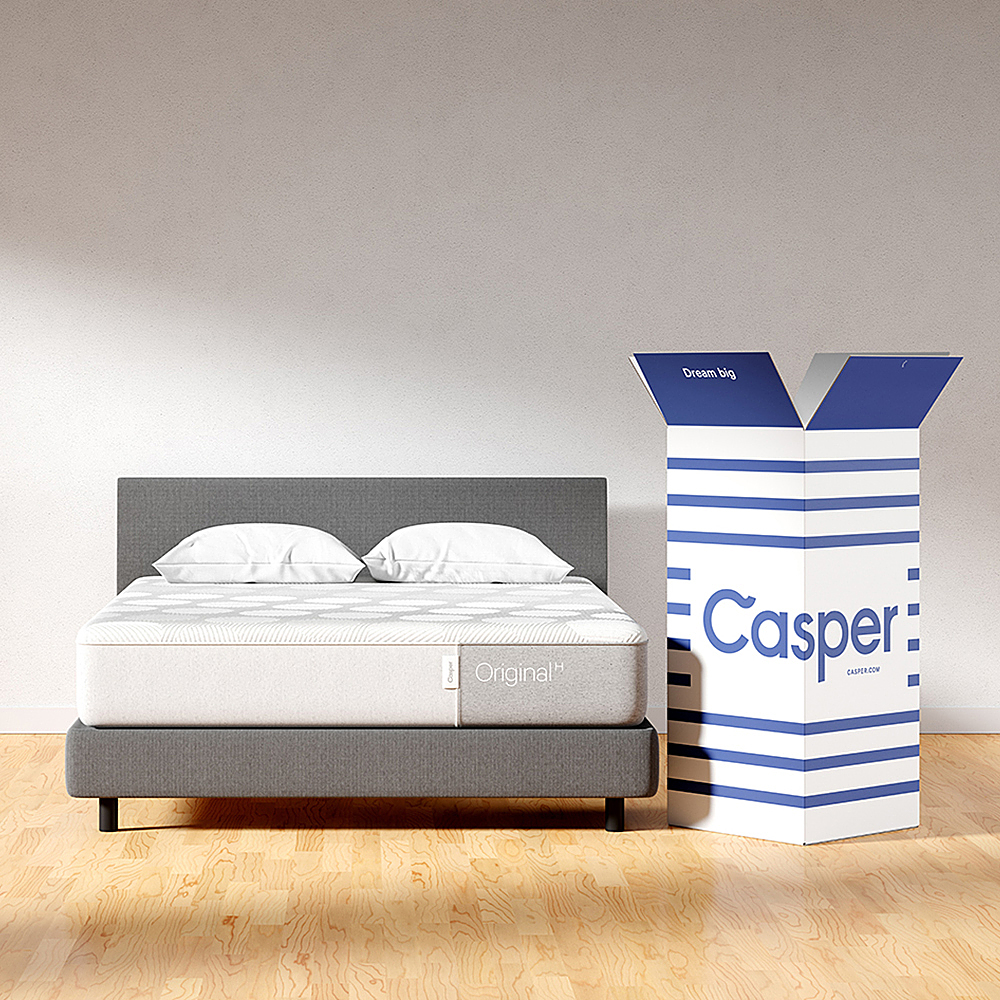Surprisingly, a quality pocket spring mattress can be your sleep sanctuary for up to a decade. These cleverly crafted beds, with individually encased coils, offer more than just a comfy night’s rest; they’re built to stand the test of time. Knowing the lifespan of your mattress is crucial—it’s about investing in years of sound sleep and safeguarding your back against the woes of worn-out springs. Durability meets comfort in these resilient mattresses, where each pocket spring works tirelessly to keep you supported from dusk till dawn.
Understanding how long your trusty mattress will hold its shape and support can save you from restless nights on sagging springs. Dive into the world of pocket spring mattresses and discover how their longevity could be the secret ingredient to uninterrupted slumber.
Lifespan of Pocket Spring Mattresses
Average Lifespan
The average lifespan of a pocket spring mattress is generally around 7 to 10 years. This duration can vary based on how the mattress is used and cared for. A high-quality pocket spring mattress may last even longer if it’s well-maintained.
Factors like body weight, daily usage, and maintenance play a role in longevity. For instance, rotating the mattress regularly can help distribute wear evenly. This simple step might extend its life by several years.
Influencing Factors
Several elements affect how long these mattresses last. The quality of materials and construction are at the top of this list. A mattress made with premium springs and robust fabrics will likely endure longer than one crafted from lower-quality components.
Another key factor is usage intensity. A bed that’s slept on every night will age faster than one in a guest room. It’s also important to consider:
- Weight distribution: Uneven pressure leads to quicker wear.
- Cleaning routine: Regular cleaning prevents build-up that could degrade materials.
- Protective covers: Using one shields against spills and stains.
Proper support from a matching base or frame cannot be overstressed either; it ensures the springs work effectively over time.
Comparison With Others
When compared to other types, pocket spring mattresses offer a unique balance between durability and comfort. Memory foam options might lose their shape after fewer years while traditional innerspring models could start sagging sooner due to interconnected coils.
Here’s how they stack up:
- Memory Foam: Contours more but may not bounce back as well with age.
- Latex Mattresses: Known for durability, often outlasting springs.
- Innersprings: Tend toward earlier sagging without individual coil pockets.
Understanding Pocket Sprung Mattresses
Construction Details
Pocket sprung mattresses, unlike open coil mattresses, consist of individual springs encased in their own pockets of fabric. This design allows each spring to move independently. It provides better support by contouring to the body’s shape.
The number of pocket springs can vary. More springs often mean more support and comfort. However, a higher count doesn’t always guarantee longevity.
Durability Factors
The construction of pocket spring mattresses directly affects their durability. Since the springs work separately, they tend to wear out less quickly than open coils that move as one unit.
Good quality pocket sprung mattresses also have reinforced edges. This prevents sagging and maintains mattress integrity over time.
Body indentations can be an issue with all types of mattresses but are less common in pocket sprung options due to their structure.
Longevity Features
Some unique features contribute to the longevity of these mattresses:
- High-quality materials: The type of material used for the covering and the filling layers above the springs can affect lifespan.
- Spring composition: Springs made from stronger metals will last longer.
- Fabric pockets: These help protect the springs from wear and tear.
Regular rotation can extend a mattress’s life by distributing wear evenly across its surface.
Factors Affecting Mattress Longevity
Usage Impact
Pocket spring mattresses can last for many years. But how long they last depends on how you use them. If you sleep on your mattress every night, it will wear out faster. This is because the springs lose their ability to bounce back over time.
Kids jumping on the bed or sitting in one spot too often also speeds up wear and tear. It’s like bending a paperclip back and forth until it breaks.
- Regular sleeping patterns maintain mattress shape.
- Excessive pressure leads to quicker deterioration.
To extend your mattress’s life, rotate it head-to-foot every few months. This helps spread out the wear evenly across all springs.
Maintenance Role
Caring for your mattress makes a big difference in its lifespan. Using a mattress protector keeps spills and dirt away from the fabric and springs inside. Keeping your bed clean prevents damage that could shorten its life span.
Vacuuming regularly removes dust that can build up within the layers of your pocket sprung mattress:
- Remove sheets and bedding.
- Gently vacuum with an upholstery attachment.
- Rotate or flip if recommended by manufacturer guidelines.
Avoid using harsh chemicals when cleaning stains as these may harm materials used in manufacturing.
Quality Influence
The quality of materials plays a huge role in how long mattresses last:
- High-quality steel for springs provides better resilience.
- Durable fabrics resist tearing and sagging under weight.
Mattresses made with poor-quality components might not hold up well over time even with good care practices:
- Lower-grade steel loses tension more quickly.
- Cheap foams compress permanently under body weight after repeated use without recovering shape entirely as high-density foams do.
When buying a new pocket spring mattress, look at thickness, firmness levels, type of padding layers above coils—all these factors contribute to longevity alongside proper maintenance habits discussed earlier.
Comparing Durability Across Mattress Types
Memory Foam
Durability varies by mattress type. Memory foam mattresses, known for their comfort, may not match the longevity of pocket springs. They mold to your body but can lose shape over time.
Memory foams have different densities. High-density foams last longer than low-density ones. The materials used and how they react to weight affect durability too.
Pocket Spring
Pocket spring mattresses boast individual coils for support. This design helps them retain firmness longer than memory foam options.
Quality matters here as well. A quality mattress with more coils and thicker wire will likely outlast a cheaper one. Good maintenance can extend its life even further.
Latex Mattresses
Latex mattresses are durable because of their material resilience. These types often outlive both memory foam and pocket spring styles. Natural latex is especially robust compared to synthetic versions or blends. They resist sagging and maintain a consistent feel over many years.
Latex also resists dust mites and allergens, which contributes to its longevity. The natural elasticity supports various body weights without losing shape quickly.
Hybrid Mattresses
Hybrid mattresses combine several layers of materials like memory foam, latex, or springs. This mix aims at offering the best features from each type: comfort from foams and support from springs.
However, hybrids vary greatly in quality depending on the balance between these layers. A hybrid with thick memory foam atop sturdy springs might offer good durability if constructed well.
Some hybrids incorporate high-density foams or natural latex for added lifespan. Look for models that specify layer thicknesses and material types when considering durability.
Signs for Replacing a Mattress
Physical Deterioration
Old mattresses often show clear signs of wear. You might notice the middle part sags or there are visible lumps. These signs mean the mattress no longer provides proper support. A sagging mattress can lead to back pain.
Indentations on the side where you sleep also suggest it’s time for a new bed. If your bed frame is still solid, but the mattress looks uneven, don’t wait too long to replace it.
Sleep Quality
A good night’s sleep is crucial for health and well-being. If you’re tossing and turning or waking up tired, your old mattress could be to blame. An uncomfortable sleeping position can ruin sleep quality.
Listen to your body. If rest isn’t refreshing anymore, consider getting a new mattress that suits your needs better.
Allergy Triggers
Mattresses collect dust mites over time which may trigger allergies. Sneezing, coughing, or itching at night could all be signs that mites have made a home in your bed.
If allergenic symptoms appear without another cause, look into replacing your entire bed setup including pillows and bedding.
Care Tips for Pocket Spring Mattresses
Regular Cleaning
Maintaining a clean mattress is crucial. Dirt and dust can wear down the materials, while spills may lead to mold. To keep your pocket spring mattress in top shape, vacuum it monthly. This removes dirt that wears out fabric and springs.
Every few months, air out your mattress. Remove all bedding and let it breathe for several hours. Sunlight helps kill bacteria and mites.
Protector Usage
A good mattress protector shields against damage. It keeps away liquids, allergens, and pests which degrade mattresses over time.
Choose a breathable protector to prevent moisture buildup. This also helps maintain the ideal sleeping temperature by allowing air flow through the mattress’s layers.
Handling Care
Move or store your mattress with care to avoid damage to its structure or springs:
- Keep it flat when moving.
- Avoid bending or folding.
- Protect from sharp objects.
When storing long-term:
- Choose a cool, dry place.
- Avoid stacking heavy items on top.
- Use a cover for extra protection against dust and pests.
By following these tips you can help extend the life of your pocket spring mattress beyond what might be expected without such care.
Extending Mattress Lifespan Strategies
Regular Rotation
Rotating your mattress is key. Do it every six months to spread wear. This avoids dips and sags from constant use in one area. It extends the life of pocket spring mattresses.
Rotate head-to-foot, not just flipped over. Flipping isn’t always possible with modern mattresses designed with a top layer for comfort that should not be on the bottom.
Proper Support
Ensure your bed frame or base gives proper support. This prevents sagging and maintains mattress structure.
A good base supports weight evenly across the mattress surface. Check manufacturer recommendations for slat spacing if you have a slatted base to ensure compatibility with your pocket spring mattress.
Weight Management
Avoid putting too much pressure on any part of the mattress. This includes:
- Not sitting on the edge too often.
- Avoiding placing heavy objects on it for extended periods. Excessive weight can damage springs, reducing lifespan.
Enhancing Mattress Lifespan Through Preventative Measures
Proper Support
A high-quality bed frame is crucial for a mattress’s longevity. It ensures even weight distribution, preventing sagging and uneven wear.
Using the right support extends your mattress’s life. A sturdy frame holds the pocket springs in place. This helps maintain their shape over time.
Maintenance of Pocket Spring Mattresses
Regular Vacuuming
Vacuuming your mattress is a simple step. It can keep it clean and extend its life. Dust and allergens build up over time. They can affect the pocket coils inside. Use the upholstery attachment on your vacuum cleaner to gently go over the surface.
Do this once every few months. More often if you have allergies or pets. This keeps the springs free from debris that could damage them.
Spot Cleaning
Spills happen, but they don’t have to ruin your mattress. For small stains, use mild detergent and water. Apply it with a cloth by dabbing, not rubbing hard.
For tougher stains, baking soda works well too. Sprinkle it on, let it sit for a few hours, then vacuum up the residue.
Remember to let your mattress dry completely before putting sheets back on.
Professional Help
Sometimes home methods aren’t enough for deep cleaning or serious issues with pocket spring mattresses.
In these cases, seek professional help from those who specialize in mattress care.
They have tools and expertise to properly handle more significant problems without damaging the support system of coils.
Professionals know how to treat different materials safely while maintaining their integrity.
Conclusion on Maximizing Pocket Spring Mattress Life
Recap Highlights
By reflecting on the key points discussed, it’s clear that pocket spring mattresses have a significant lifespan. This is due to their unique design, which includes individual springs encased in fabric pockets. These springs work independently, providing better support and reducing mattress wear.
However, the actual lifespan of a mattress can vary. It depends on factors like the quality of materials and the level of use. Generally, a pocket spring mattress can last between 7 to 10 years. But with exceptional care, some may even last up to 15 years.
Care Importance
Proper maintenance plays a crucial role in extending the life of your mattress. As mentioned earlier, simple actions like rotating the mattress regularly can prevent uneven wear. Also, using a mattress protector shields against spills and stains that can degrade the materials.
Keeping the mattress clean is just as important. A regular vacuuming schedule helps remove dust and allergens that could affect the integrity of the springs over time. Remember to check manufacturer guidelines for specific cleaning instructions.
Investing in a durable pocket spring mattress is not only about comfort but also value over time. A high-quality mattress may cost more upfront but considering how long it lasts, it’s often worth it.
In summary, to maximize your pocket spring mattress’s lifespan:
- Choose a high-quality mattress from the start.
- Use a protective cover.
- Rotate it consistently.
- Clean it as recommended.
Frequently Asked Questions
How long can I expect my pocket spring mattress to last?
Typically, a pocket spring mattress should serve you well for about 6 to 10 years. However, this varies based on usage and care.
Are there specific factors that affect the lifespan of a pocket spring mattress?
Yes, factors like the quality of materials, body weight, frequency of use, and maintenance routines play crucial roles in how long your mattress will last.
How do I know when it’s time to replace my pocket spring mattress?
Signs include visible sagging, noticeable lumps or springs felt through the surface, increased discomfort during sleep or waking up with aches.
Can I compare durability between pocket spring mattresses and other types?
Indeed! Pocket springs generally offer better longevity than traditional innerspring but may not last as long as high-quality memory foam or latex options.
What are some care tips to help maintain my pocket spring mattress?
Rotate your mattress regularly, use a protective cover to guard against spills and stains, and ensure proper support from your bed frame.
Is there any way I can extend the life of my current pocket spring mattress?
Absolutely! Using a supportive bed base, avoiding jumping on the bed, keeping it clean and dry—all these strategies contribute greatly to extending its life.



